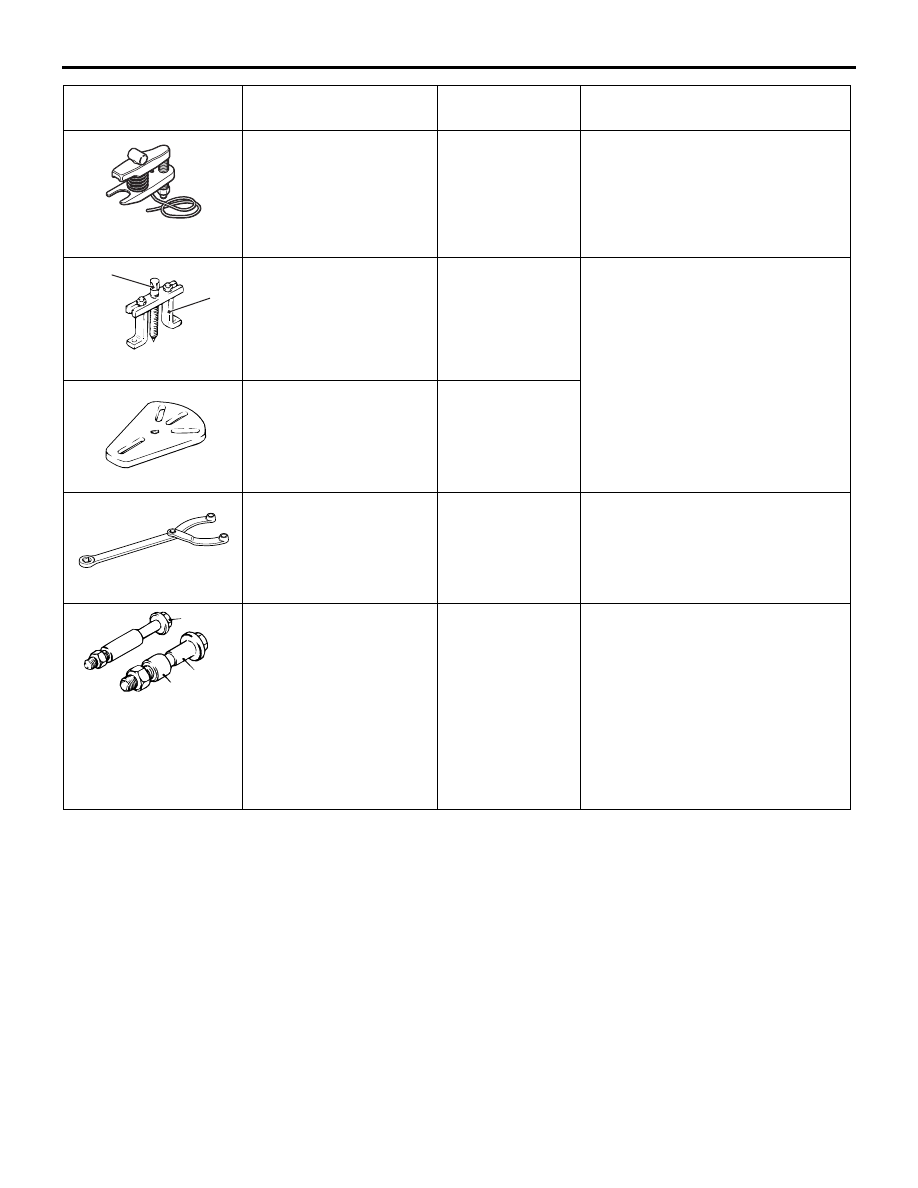Mitsubishi 380. Manual - part 437

SPECIAL TOOLS
AUTOMATIC TRANSMISSION
23A-288
MB991897
Ball joint remover
MB991113-01,
MB990635-01 or
general service
tool
Knuckle and tie rod end ball joint
breakaway torque check
NOTE: Steering linkage
puller(MB990635 or MB991113)is
also used to disconnect knuckle
and tie rod end ball joint.
MB990241
Axle shaft puller
A: MB990242
Puller shaft
B: MB990244
Puller bar
MB990241-01 or
General service
tool
Removal of the drive shaft
MB991354
Puller body
General service
tool
MB990767
End yoke holder
MB990767-01
Fixing of the hub
A: MB991017
B: MB990998
C: MB991000
A, B: Front hub remover
and installer
C: Spacer
MB990998-01
• Removal of the hub
• Provisional holding of the wheel
bearing
• Measurement of hub starting
torque
• Measurement of wheel bearing
end play
NOTE: MB991000, which
belongs to MB990998, should be
used as a spacer.
TOOL
TOOL NUMBER AND
NAME
SUPERSESSION APPLICATION
AC106827
MB990241AB
A
B
MB991354
B990767
AC100320 AB
A
B
C